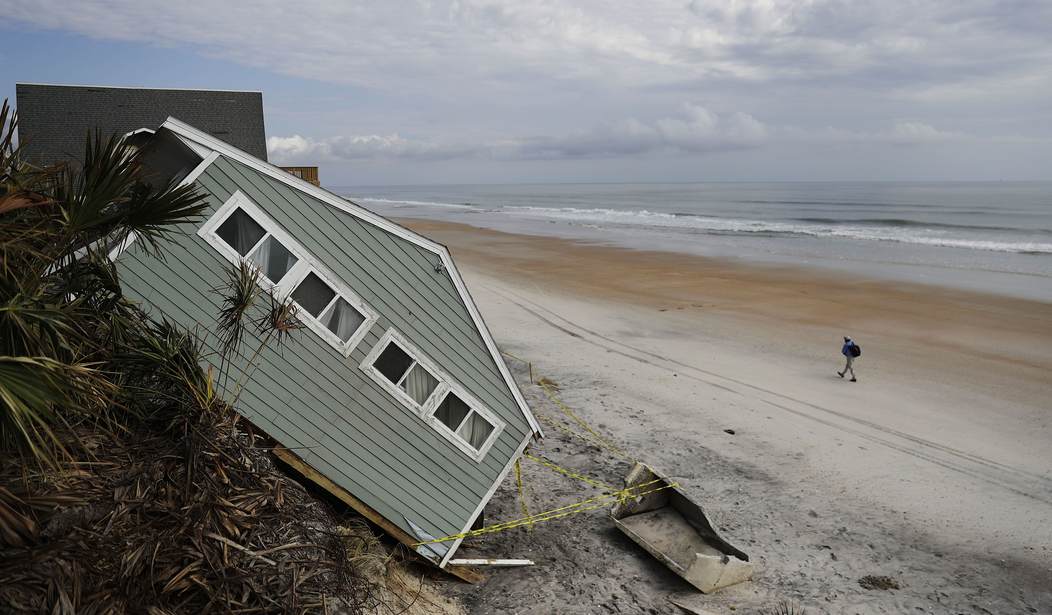Assuming the National Weather Service is on its A-game in terms of predictions, the news about Tropical Storm Ida (soon to be Hurricane Ida again) is disquieting, to say the least. The current projected path has it making landfall on Sunday evening and the center of the cone of probability is pointing directly at New Orleans. Making things even more offputting is the fact that Sunday is the precise, 16th anniversary of when Katrina came ashore. Also, Ida is predicted to be at least a category 3 storm by then, just as Katrina was. All but the youngest residents who were there for that disaster still clearly remember Katrina and the horror stories that emerged during the aftermath. So the big question now is whether or not we learned anything in the previous sixteen years and if a worst-case scenario can be avoided. (NY Post)
Ida slammed into Cuba as a hurricane on Friday — and is expected to grow into a terrifying Category 3 one due to hit New Orleans on the 16th anniversary of Katrina.
“The forecast track has it headed straight towards New Orleans. Not good,” said Jim Kossin, a senior scientist with The Climate Service.
New Orleans Mayor LaToya Cantrell ordered the evacuation of everyone living outside the levee system, which was overwhelmed by catastrophic flooding when Katrina hit in 2005, killing an estimated 1,800 people.
We have the same problem this week that we had in 2005, which is to say that predicting hurricanes is still a tricky bit of business. The NWS still gets these things wrong from time to time. Ida could slam directly into New Orleans or it might veer off during the final 24 hours and have the eye make landfall anywhere from Mississippi to Alabama. Also, in the same way that Katrina surprised many meteorologists, Ida could be anywhere from a category 1 to a category 5 storm by the time it reaches land.
So what preparations are being put in place this time? The Mayor of New Orleans has already ordered mandatory evacuations for all residents who are outside the levee system. But as you’ll recall, the levee system failed in 2005, leading to the disaster we saw inside the city. A lot of work has been put into shoring that up, but is it enough? Will it hold? Or would it be better to simply evacuate the entire city?
The Governor has preemptively declared a state of emergency and asked the White House to similarly announce a“pre-landfall” federal declaration of emergency, making federal emergency funds and resources available. Clearly, the politicians have learned their lessons from Katrina, at least in terms of not opening the door to accusations of being caught unprepared.
But what sort of actual groundwork is in place or on the way? Saying there is funding available is nice, but are there FEMA trailers being moved back into the region in case the levees fail again and most of the city has to be evacuated? Are rescue boats being staged in areas of higher ground? Are first responders from neighboring regions moving into hotels north of the city with rescue vehicles available?
Yes, all of this will cost money and if the storm fails to produce a similar catastrophe, people will be pointing fingers over that. But which side would you rather err on? I hope the municipal and state governments also remember that a lot of people ignored evacuation orders in 2005 and wound up being stranded. There should be state troopers going door-to-door today rousting people out.
Hopefully, this will all be for nothing and the preparations being made will not be needed. But if the levees fail again and the city is once again underwater, I’m going to bring up an unpopular suggestion that I put forward in 2005. Perhaps New Orleans is just a lost cause because it sits in such an obvious hurricane bullseye area and much of it is below sea level. While it would be a massive job, they actually could move New Orleans about fifty miles further up the river, rebuilding it very close to how it looks today. Then they could give the current location back to nature and let the sea and the marshlands reclaim what was originally theirs to begin with.








Join the conversation as a VIP Member